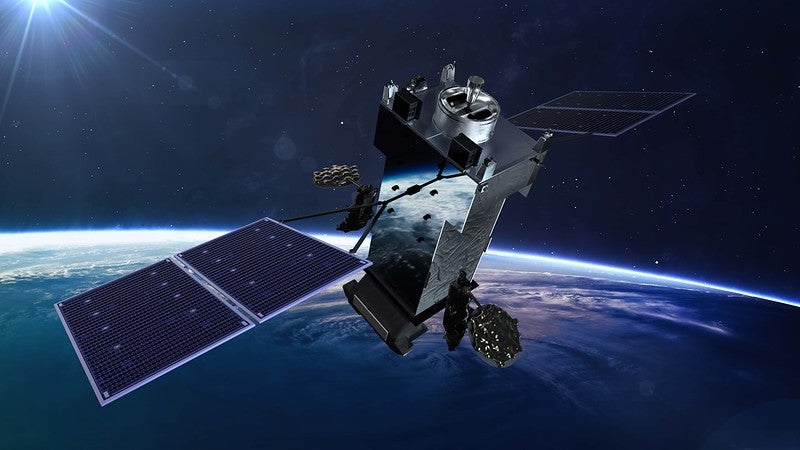Next-Gen OPIR Program Completes System-Level Critical Design Review

Lockheed Martin’s Next Generation Overhead Persistent Infrared Geosynchronous Earth Orbit (NGG) Block 0 early missile warning satellite. Photo: Lockheed Martin
The U.S. Space Force and Lockheed Martin completed a system-level Critical Design Review (CDR) of the company’s Next Generation Overhead Persistent Infrared (Next-Gen OPIR) Geosynchronous Earth Orbit (NGG) Block 0 satellites last month, the company said on Nov. 23.
“The NGG Block 0 program held the system level CDR on Oct. 28, maintaining the program’s accelerated pace,” Lockheed Martin said. “The CDR specifically addressed the integration between the space and ground segments in addition to the integration of the Next Generation Interim Operations Ground System with the legacy Missile Warning system, enabling the enhanced missile warning capabilities following launch.”
Raytheon Technologies is vying with a Northrop Grumman/Ball Aerospace team to build the NGG mission payloads, and the program also finished a CDR of those payloads this year and a space vehicle CDR. Lockheed Martin is to receive the payloads in 2023.
The first NGG satellite is to launch in 2025. The three NGG satellites are to provide advanced space-based missile warning and to be resistant to cyber attacks. The satellites are to integrate a new OPIR sensor with an enhanced LM 2100 common satellite bus.
Lockheed Martin won the non-competitive, sole-source contract worth $2.9 billion to develop the three Next-Gen OPIR GEO satellites in August 2018 and a follow-on $4.9 billion contract in January.
Northrop Grumman is also building two polar orbit satellites for missile warning under Block O of Next-Gen OPIR and received a nearly $2.4 billion contract in May last year for early hardware procurement for the satellites.
Next Gen OPIR is to improve upon existing Lockheed Martin Space Based Infrared System (SBIRS) satellites by providing a resilient missile warning capability against counter-space and emerging missile threats, including “dimmer and faster targets,” Lockheed Martin said.
The final SBIRS satellite, SBIRS GEO-6, is to launch early next year on a United Launch Alliance Atlas V 421 rocket from Cape Canaveral Space Force Station, Florida.
This article was originally published by our sister outlet Defense Daily.